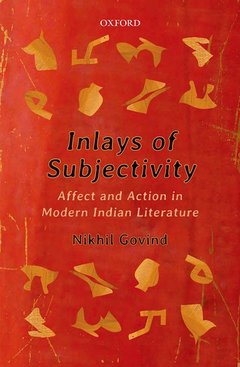Description
Inlays of Subjectivity
Affect and Action in Modern Indian Literature
Author: Govind Nikhil
Language: English
Subject for Inlays of Subjectivity:
Publication date: 11-2019
224 p. · 14.6x22.3 cm · Hardback
224 p. · 14.6x22.3 cm · Hardback
Description
/li>Biography
/li>
This book discusses the question of subjectivity in modern Indian literature using some of the most influential literary texts of the last hundred years. Scholarship in Indian literature tends to be divided along the lines of region, language, historical period, class, caste and so on. However, this book, by foregrounding a concept---subjectivity---allows the concept to determine the architecture of the book. Thus there are chapters on the various modes of subjectivity---a sense of ethical subjectivity is often awakened by a fierce sense of injustice, and the first two chapters discuss this, in the context of a contemporary Malayalam novel by KR Meera, and Urmila Pawar's memoir about her Dalit identity. The next two chapters delve into the literary history of selfhood in India---canonical writers such as the Hindi novelist Agyeya, the Urdu novelist Ismat Chughtai, and the Bengali novelists Saratchandra Chatterjee and RabindranathTagore are discussed. The last chapter revisits these concerns through the many voices employed by the Hindi novelist Krishna Sobti, whose career straddles the second half of the twentieth century.
Nikhil Govind is Associate Professor and Head, Manipal Centre for Humanities, Manipal Academy for Higher Education (MAHE). His doctoral work at the University of California, Berkeley, was on the consonance between revolutionary and literary form in strands of Bengali and Hindi literature. He is the author of BETWEEN LOVE AND FREEDOM: THE REVOLUTIONARY IN THE HINDI NOVEL (Routledge, 2014, reprinted 2018). He is a Working Editor and on the Editorial Board of the Indian Journal of Medical Ethics (IJME). He writes regularly for mainstream media on Indian literature, cinema, higher education, and contemporary culture.
© 2024 LAVOISIER S.A.S.

